A Preseason Projection of All 68 Teams in the 2021 NCAA Tournament

It isn’t an exaggeration to say that Wednesday is one of the single most important days on the entire 2020 calendar.
Ok, it is an exaggeration, but darn it, 2020 has been tough, and I just want to enjoy some college basketball!
Well, after a full 256 days we will finally get that chance, as on Wednesday (or as I’ve dubbed it “one of the single most important days on the 2020 calendar”) college basketball finally returns. A full 256 days after Creighton and St. John’s played a half of basketball at the Big East Tournament before the game was called off and the season was called off, we will have hoops, lots of it on Wednesday.
Later this week I’ll give you a full rundown of what you need to watch this week, but in the meantime, let’s get you in the mood for some college hoops with our preseason field of 68. We do this every year, and in many ways, last year was our most successful, as we didn’t miss a single NCAA Tournament pick! Admittedly, that’s because there was no NCAA Tournament, but hey, what can I say? I’m a glass is half full guy.
Ok, bad jokes aside, here is our full, preseason field of 68 with one important caveat: This is not “bracketology.” It is simply a list of the 68 teams that we believe will be in the Big Dance.
We will start with the 31 automatic bids (down from the normal 32 since the Ivy League isn’t playing winter sports this year) and then add the 37 at large bids below. Also, everything is in alphabetical order by conference, so if you see, say “Alabama” listed above “Tennessee” in the SEC section, that doesn’t necessarily mean we think the Tide will finish ahead of the Vols in the final SEC standings or earn a better seed. It just means we tried to keep things alphabetical.
Anyway, here is our preseason field of 68.
Automatic bids (31 – no Ivy League this year)
AAC (auto bid) – Houston: Kelvin Sampson has just kind of, out of nowhere, turned Houston into a mini-juggernaut and a program that you just pencil in to the tournament every March. Had an NCAA Tournament been played last year, it would’ve marked the Cougars’ third straight trip, thanks to a second-straight regular season title. They should be favored again with four of their top six scorers back from a season ago, although they were dealt a crushing blow when the team’s best returning big man, Fabian White, was lost for the season with an ACL tear over the summer.
ACC (auto bid) – Virginia: Although Virginia started slow (12-6, 4-4 in the ACC) the Hoos closed in style, winning 11 of their final 12 games and would’ve entered the ACC Tournament as the proverbial “team no one wanted to play.” Well, most of that team is back, and they add Marquette transfer Sam Hauser, who averaged nearly 15 a game for the Golden Eagles two seasons ago. It should give Virginia the offensive punch they need to go along with their standard defensive presence, making them the team to beat in the ACC.
Atlantic 10 (auto bid) – Saint Louis: While all the buzz has been on Richmond all off-season, a legitimate argument could be made that Travis Ford has the best team in the A-10. All five starters and the top eight scorers are back off a team which went 23-8 last year, won six of its final seven games and played Dayton tougher than anyone in the conference (they lost by two in overtime and by six, the Flyers’ two closest league wins). The name to know here is Jordan Goodwin, a guard who not only averaged 15 points, but nearly 10 boards per contest last season as well.
America East (auto bid) – Vermont: Listen, we could go ahead and get cute here, but Vermont has won the last four America East regular season titles, going an absurd 59-4 in league play over that stretch. Go ahead and bet against that if you want. But I’m not going to overthink it.
A-Sun (auto bid) – Stetson: All five starters are back for Stetson including All-Conference guard Rob Perry, and unlike so many mid-majors, the Hatters have legitimate size, with a pair of post players 6’10 or bigger in their rotation. Plus, are you really betting against a team named the “Hatters?” This would be Stetson’s first ever NCAA Tournament appearance as well, so to bet against them would be betting against history as well. You don’t want to bet against history, do you?
Big East (auto bid) – Villanova: There’s an old saying that “opinions are like a**holes, everyone has one and they all stink” (something that anyone who has listened to my podcast will certainly agree with) but in my opinion, the Wildcats are the best team in college basketball heading into the year. Villanova won 24 games last year and a share of the Big East regular season title, and return all but one player off that team. Admittedly that one player was their best player, Saddiq Bey, who was a first round pick in last week’s NBA Draft, but the Wildcats still return four players who averaged double figures a season ago. Their depth has been limited by injuries this fall, but this will still be the team to beat, in my opinion, come March.
Big South (auto bid) – UNC-Asheville: To the legions of Big South fans who are reading this (in the millions, likely) go ahead and take a deep breath: I’m about to go out on a crazy limb here. While logic says that Winthrop is the team to beat, I’ll instead take UNC-Asheville, which went from 4-27 in Mike Morrell’s first year to 15-16 a year ago. They return five starters who all averaged double-figures, and play a style that forces teams into a lot of turnovers (they ranked in the Top 25 nationally in that category last season). I’m feeling frisky and riding with Asheville here. Let’s get crazy, people!
Big Sky (auto bid) – Eastern Washington: Montana has a roster built for the future, but Eastern Washington is still the team of the present with three starters back off a squad that won the Big Sky regular season title. Jacob Davidson (18 points per game) and Kim Aiken Jr. (13 points a contest) could both be All-Conference caliber players.
Big Ten (auto bid) – Illinois: There wasn’t a single program who had a better NBA Draft deadline than the Illini. It was all but a foregone conclusion that star point guard Ayo Dosunmu would be going pro, yet in the single most shocking decision of the deadline, he decided to return after averaging just under 17 points per game last season. Big man Kofi Cockburn also could’ve gone pro – but instead will be back for another year as well. Add in a loaded freshman class, and this will be Illinois best team since playing for the national championship in 2005.
Big 12 (auto bid) – Baylor: It kind of stinks that Scott Drew won’t be with Baylor to open the season this week (he tested positive for Covid, but was asymptomatic) but it doesn’t change the fact that the Bears are the team to beat in the Big 12, and one of the best in the country. They return four starters off a team that went 26-4 last season and won an absurd 22 games in a row. They will lack a post presence with Freddie Gillespie graduating, but might have the deepest perimeter in college basketball, with Jared Butler, MaCio Teague and Davion Mitchell all back, joined by a slew of transfers and freshmen in Waco. This team is “national championship” good.
Big West (auto bid) – UC-Santa Barbara: Every year I pick UC-Santa Barbara to win this league, based on the insane talent accumulation on the roster, and every year UC-Irvine ends up winning the damn thing. At some point I’ve got to get it right, right? Well it ain’t gonna be this year baby, since well, Santa Barbara again has an insane collection of talent. The Gauchos bring back the league’s best returnee Amadou Sow (14 points per game) and also welcome in the league’s best newcomer, former Top 100 prospect Miles Norris, who began his career at Oregon. Between Sou and Norris, Santa Barbara literally has a better front line than half the Pac-12, and have two guards who began their careers at the high-major level – JaQuori McLaughlin (Oregon State) and Brandon Cyrus (DePaul). Again, the talent is there. At some point I’ll get this pick right!
Colonial (auto bid) – Hofstra: The CAA was one of the few conferences in the sport to actually complete their league tournament and hand out its automatic bid, with Hofstra advancing to its first NCAA Tournament since 2001 (when Jay Wright was their head coach, by the way). The bad news is that the tournament was never played, but the good news is that in a league devastated by graduation (William & Mary) and transfers (Delaware), the Pride have as good a chance as anyone to claim this year’s auto bid and actually play in the Big Dance.
Conference USA (auto bid) – Western Kentucky: No one envisioned a world where Charles Bassey would even play a second year of college basketball, yet after returning to school last year, followed by a season-ending injury, he is now back for Year 3 in Bowling Green. Along with Taveion Hollingsworth, the Hilltoppers arguably have the two best players in the league, so it’s really hard to pick anyone else here.
Horizon (auto bid) – Wright State: The Horizon was essentially a two-team race between Wright State and Northern Kentucky last year, and with Wright State bringing back most of its key players and the Norse in complete rebuild mode it feels like there is a pretty obvious favorite here. Sort of related note: Wright State’s best player is a kid named Loudon Love, who averaged 16 points and just under 10 rebounds per game last year. You really betting against a kid named “Loudon Love?” I didn’t think so.
Ivy (auto bid) – N/A: The Ivy’s won’t play winter sports, meaning they will have no auto bid this winter. It also means one more at-large berth for the rest of us!
MAC (auto bid) – Ball State: Bowling Green might have the league’s best player in Justin Turner, but across the board I like Ball State’s roster just a little bit more. Ishmael El-Amin (son of UConn legend Khalid El-Amin) is back after averaging 14 points per game last year, and the Cardinals also attracted a pair of key transfers to fill out the roster: Guard Jalen Windham (who played last year at Creighton) and big guy Reggie Jones, who arrives via Tulsa.
MAAC (auto bid) – Siena: There aren’t very many NBA caliber talents in the MAAC but Jalen Pickett is one, and he is back for Siena after averaging 15 points per game last season. The Saints won 10 straight games to end the season and claim the MAAC regular season title. They should finish the deal this year.
MEAC (auto bid) – Howard: The Makur Maker era is underway at Howard, and when the highest-ranked recruit in the history of the conference commits to your school, it’s kind of hard to pick against you, right? Add in the fact that the Bison could also get Purdue transfer Nojel Eastern eligible (he is waiting on a transfer waiver) and this is kind of a no-brainer.
Missouri Valley (auto bid) – Northern Iowa: Northern Iowa was one of the best mid-majors in college hoops last year, a group that not only went 25-6, but beat Colorado and South Carolina in the regular season. This year the Panthers welcome back their top three players, including league Player of the Year AJ Green, who averaged 19.7 points per game. Not only is this the best team in the league, depending on how out of conference stuff works out, it could be looking at a five or six seed come tournament time.
Mountain West (auto bid) – San Diego State: With due respect to the Kawhi Leonard led 2010-2011 Aztecs, the 2019-2020 squad was the best team in program history. The downside is of course there was no NCAA Tournament and All-American Malachi Flynn and two others (big man Yanni Wetzel and guard KJ Feagin) departed, but the good news, plenty returns as well. After playing alongside Flynn last year, Matthew Mitchell could emerge as the best player in the Mountain West and Jordan Schakel and Adam Seiko are dead-eye three-point shooters. Nathan Mensah is back in the middle, and look for both Tre Pullium and Terrell Gomez to emerge in the backcourt. We’ll find out just how good this team is early: They open against UCLA the first night of the season.
Northeast (auto bid) – Fairleigh Dickinson: The last time an NCAA Tournament was played Farleigh Dickinson won the NEC in a play-in game, before falling to Gonzaga in the first round of the NCAA Tournament. After a down year in 2019-2020, four of five starters are back. They look like as good a bet as any to win the league’s automatic bid.
Ohio Valley (auto bid) – Austin Peay: In addition to being home to the best cheer in college basketball (Let’s go Peay!) the Governors also have one of the best mid-major players in the sport, Terry Taylor (he averaged 21 points and 11 rebounds a season ago). Belmont and Murray State are always tough, but the Governors are the team to beat.
Patriot (auto bid) – Colgate: Colgate was last year’s regular season champ, but Boston University beat them to win the conference tournament (which was completed before the NCAA’s were cancelled) so you really can’t go wrong picking either one. Still, I’ll go with Colgate, as the reigning regular season champ, with the best player in the league, in guard Jordan Burns. Plus, they make some great toothpaste (Colgate, get it? Ok, let’s just move on)!
Pac-12 (auto bid) – UCLA: There isn’t a single program in college basketball which is receiving less respect, relative to what they return than UCLA. Remember, the Bruins won 11 of their final 14 games last season and finished second in the Pac-12 – and bring back eight of their top nine scorers. Yet pollsters see them as a fringe Top 25 team. I’m just telling you straight up, they are probably one of the 10 best teams in college basketball, with a chance to take Mick Cronin to his first Final Four. The Bruins are loaded.
SEC (auto bid) – Kentucky: Olivier Sarr’s immediate eligibility is the game-changer this team needed. Kentucky now has, in my opinion, it’s deepest and best defensive team since the 2014-2015 season, and its most talented team overall since 2016-2017. Sarr, BJ Boston and Terrence Clarke all have “First Team All-SEC” type talent, while Jacob Toppin (assuming he plays) and Cam’Ron Fletcher add depth on the wing and Isaiah Jackson a shot blocker down low. The season will be defined however by the point guard play of Devin Askew and Davion Mintz.
Southern (auto bid) – UNC-Greensboro: With Steve Forbes leaving East Tennessee for Wake Forest there is an opening atop the league, and just about everyone thinks it will either be filled by Furman or UNC-Greensboro. With Furman losing its catalyst Jordan Lyons, I give the slight edge to UNCG, which brings back a pair of double figure scorers, including guard Isaiah Miller, who is arguably the league’s best player.
Southland (auto bid) – Stephen F. Austin: Two things, and two things only on Stephen F. Austin: One, they beat Duke last year. Just sharing in case you forgot. Two, they actually had an APR issue within the program, and have agreed to sit out the 2021-2022 NCAA Tournament. Why do I bring that up? With five key seniors on this year’s roster, the Lumberjacks are going for broke in 2021. Already the best team in this league, I simply can’t see them not getting the auto bid this year.
SWAC (auto bid) – Texas Southern: Remember Johnny Jones? Former LSU head coach? Ben Simmons, blah blah blah? Yeah, well, he’s at Texas Southern now, and has two transfers who are arguably the two best players in this league, Michael Weathers (who came from Oklahoma State) and Galen Alexander (from Georgetown). Can’t say I really trust Johnny Jones, but even he can’t screw this up, right? (Don’t answer)
Summit (auto bid) – South Dakota State: South Dakota State has won three straight regular season titles (by technicality they split it last year) and return all five starters. Sometimes in life, it’s best not to overthink things. This is one of those times.
Sun Belt (auto bid) – Little Rock: Little Rock returns all five starters off a team that won last year’s regular season title. Again, let’s not overthink this, people!
WAC (auto bid) – New Mexico State: New Mexico State has won the auto bid seven of the last eight years in the WAC prior to last season’s pandemic-cancelled NCAA Tournament, and seemed in line to do the same last year – you know, since they went 16-0 in league play. Again, let’s not overthink this. They are by far the best team in this league.
WCC (auto bid) – Gonzaga: Gonzaga once again has the most talented roster in the league, and in the case of 2020-2021, one of the more talented rosters in the country. Corey Kispert and Joel Ayayi both could’ve gone pro and likely been drafted, but instead are back for another season, and joined by do-it-all freshman in the backcourt Jalen Suggs. The frontcourt is loaded with former Top 100 prospects Drew Timme and Anton Watson, as well as Oumar Ballo, a monster down low originally from Mali. You can argue about Gonzaga if you want. But this roster is once again good enough to win it all.
At-large (37)
AAC (1)
Memphis (at large): I know it’s easy to rag on Penny Hardaway, but in his defense, he had the Memphis Tigers on the bubble after losing two of his top three scorers (James Wiseman and DJ Jeffries) for the season. Yes, some was self-inflicted and sure, when you say “you want all the smoke” you’ve got to do better than play yourself onto the bubble. But with the return of a healthy Jeffries, the addition of Moussa Cisse and transfer Landers Nolley, as well as Boogie Ellis, Lester Quinones and Damion Baugh all back, this is definitely a tournament team. With the potential to be even more.
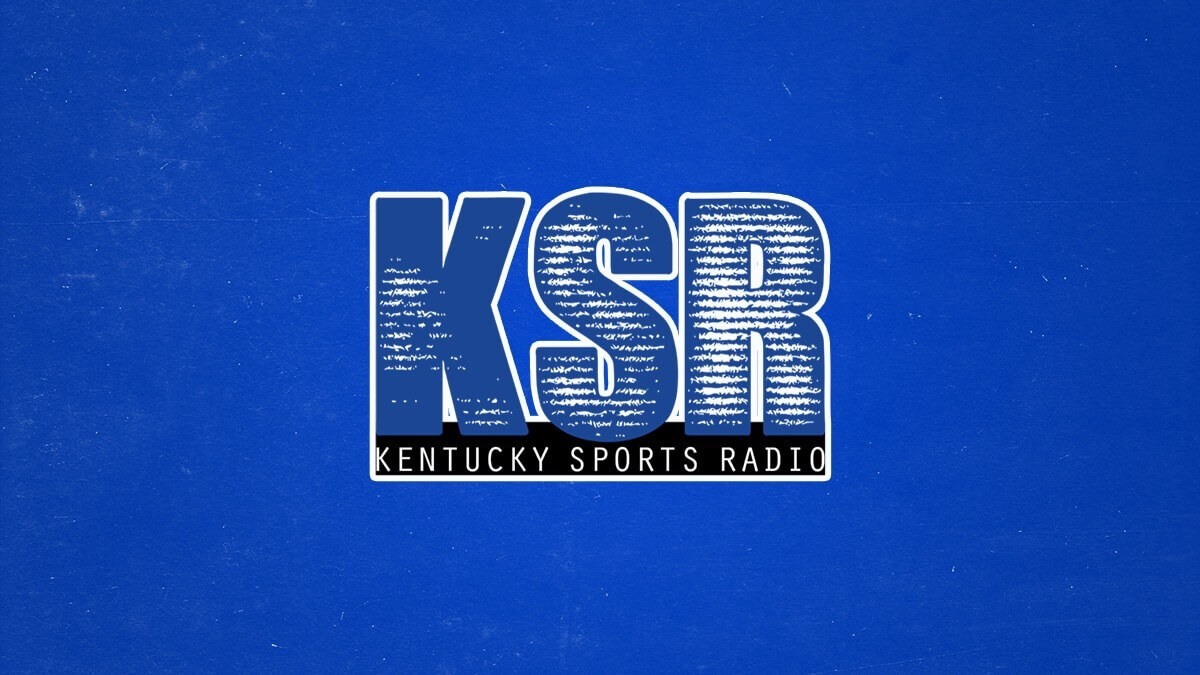
ACC (6)
Duke (at large): Outside of Jalen Johnson, I’m not sure Duke has the top end, one and done, lottery talent of years past, but they’re still Duke and they’re going to win a ton of games. Johnson and Wendell Moore make for a solid one-two punch on the wing and despite struggles as a freshman, Matthew Hurt still averaged double-figures. He should be better this year. The question for Duke – which ironically, is the same question for Kentucky and North Carolina – is how well does a freshman handle the point guard spot? In Duke’s case that player is Jeremy Roach, who is replacing reigning ACC Player of the Year Tre Jones.
Florida State (at large): As easy as it is to forget, it was Florida State – not Duke, Virginia or Louisville – who took home the ACC regular season crown last season. Unfortunately once the season ended the Seminoles lost two lottery picks (Devin Vassell and Patrick Williams) as well stalwart veteran Trent Forrest, but despite it, Florida State still quietly believes they have a roster good enough to win the ACC. The guy worth following: Freshman Scottie Barnes, who someone close to FSU told me is “one of the best defenders I’ve ever seen.”‘
Georgia Tech (at large): I didn’t end up doing a “Last Four In” (although my “First Four Out” is at the bottom) but had I, Georgia Tech would’ve been in the mix. Actually, I take that back: They were literally my last team into the field of 68. The bottom line is that I’ve been hyping the Jackets all off-season, as a team that quietly finished fifth in the ACC last year, and brings back most of its key players (most notably, senior point guard Jose Alvarado). My fear though is that Josh Pastner has taken the extreme step this off-season to implement “contact-less practices” essentially meaning the Jackets won’t play meaningful five-on-five basketball until the first game of the season. I know we all want to avoid the virus at all costs and do whatever we can to get in the season, but that can’t be the best way to prepare? Can it?
Louisville (at large): Louisville lost a ton off last year’s team – like, six of their top eight scorers. And one of their best returnees, Malik Williams is now out for the early part of this season with injury. This isn’t a vintage Louisville team, and I’m not sure they finish in the top five or six of the league, but David Johnson, Samuell Williamson and Williams (eventually) will do enough to get them to the NCAA Tournament.
Miami (at large): The Hurricanes were quietly an NCAA Tournament staple over the middle part of the last decade, making it three straight times between 2016 and 2018, but haven’t been back since. That two year tournament drought should end with this year’s team, which returns do-it-all, 5’7 point guard Chris Lykes (15 points per game last year) and should be helped up front by the arrival of transfer Nysier Brooks from Cincinnati.
North Carolina (at large): As easy as it is to forget now, North Carolina finished in the ACC basement last year. Like literally tied for last place alongside a team that eventually fired its coach (Wake Forest). Well, hope you enjoyed that little downturn for the Tar Heels, because it ain’t happening two years in a row. North Carolina might have the deepest frontcourt in America, where returnees Garrison Brooks and Armando Bacot are joined by two five-star freshmen, Walker Kessler and Day’Ron Sharpe. Again though, the ceiling for this team will be determined by freshman point guard Caleb Love.
Atlantic 10 (1):
Richmond (at large): The Spiders were dealt a devastating blow when wing Nick Sherrod was lost for the season earlier this fall. Still, with double-digit scorers Blake Francis, Jacob Gilyard and Grant Golden all back off last year’s 24-win team, it doesn’t alter Richmond’s floor, which is “really solid NCAA Tournament team.”
Big East (4):
Creighton (at large): The poor Creighton Bluejays had maybe their best team in program history last season – only to see the entire year go up in smoke. But the good news is, like Villanova, everyone other than their leading scorer (Ty-Shon Alexander) is back. Marcus Zegarowski may just be the best point guard in college basketball (after averaging 16 points and five assists per game last season) and wings Mitch Ballock, Denzel Mahoney and Damien Jefferson can fill it up. This team’s depth has been ravaged with two freshmen suffering season-ending injuries in the preseason, but as long as the veterans stay healthy, the Jays are “Final Four good.”
Marquette (at large): Markus Howard is gone, but there is still plenty of talent in Milwaukee and Howard’s absence might even provide some players the opportunity to show just how good they are. First off, former Ohio State guard DJ Carton has arrived to take over the point guard spot – and after averaging 10 points in a shortened season in Columbus, could be one of the most dynamic guards in the Big East. Koby McEwen is back after averaging just under 10 points per game, and the Golden Eagles were the only Big East school to sign a McDonald’s All-American last recruiting cycle – forward Dawson Garcia. No one can replace the 27 points per game Howard put up last year, but the Golden Eagles should be much more balanced in 2020-2021.
Seton Hall (at large): Had an NCAA Tournament been played last year, Seton Hall would’ve had its best shot to win a title since the 1980’s. Unfortunately it didn’t happen, unfortunately Myles Powell is gone, and unfortunately the ceiling on this team just isn’t as high. Still, with Myles Cale, Jared Rhoden and Sandro Mamukelashvili all back, the Hall should be in position to make another NCAA Tournament, which would be their fifth straight (six if you include last season). The big question: Can Harvard transfer Bryce Aiken transition from a scoring guard in the Ivy League to a table-setting point guard for the Pirates?
UConn (at large): UConn is back in the Big East, and just in time: This is the Huskies’ best team since they won the title in 2014. James Bouknight is a star player you need to know – he averaged 13 points a game as a freshman last year, but 17 in league play and according to some of the NBA people I speak to, may be the Big East’s best long-term pro prospect. He is joined by several returnees (Josh Carlton, Tyler Polley, Jalen Gaffney), two key transfers (RJ Cole, Tyrese Martin) and a loaded freshman class for a team that is deep, athletic and ready to compete in the Big East.

@CBSSportsHQ
Big Ten (9):
Iowa (at large): If Illinois’ Ayo Dosunmu was the single most shocking NBA Draft decision, Luka Garza was the single most important. Without him, Iowa is a fringe NCAA Tournament team. With him, the Hawkeyes have the talent to go to their first Final Four in forty years. Six of the Hawkeyes top seven scorers are back, plus guard Jordan Bohanon is also back after missing virtually all of last season with injury. The defense needs to tighten up, but the offense should be good enough for the Hawkeyes to beat just about any team on their schedule.
Indiana (at large): In Archie Miller’s defense, had there been an NCAA Tournament last year the Hoosiers would’ve made it. Still “making the NCAA Tournament” isn’t the goal in Bloomington (at least it hasn’t been historically). Instead, it’s “win big once you get there.” To Miller’s credit the team is definitely heading in that direction, with by far the most talented roster of his four years in Bloomington. The Hoosiers return star big man Trayce Jackson-Davis (14 points and eight rebounds last season), a ton of talent on the wing and also add five-star freshman point guard Khristian Lander. To quote “Wedding Crashers” – no excuses, play like a champion. This is the best Indiana team in many years, and it’s time to show it.
Michigan State (at large): Add Michigan State to the list of teams who were in position to make a run at a national title last year – had, you know, an NCAA Tournament actually been played. That team’s two best players – Cassius Winston and Xavier Tillman – are gone, but there is still plenty of talent for the Spartans to make another deep March run in 2021. Rocket Watts will man the point, with Aaron Henry and Joey Hauser on the wing. Also, Joshua Langford as well, after two missed seasons of injuries. Without Winston it might not be pretty early. But Tom Izzo will have the Spartans ready for March, because well, he always does.
Michigan (at large): Juwan Howard had a solid first season at Michigan, but it would’ve been even better if it weren’t for an injury to Isaiah Livers (the Wolverines went just 5-5 without him). The good news is that Livers is back, but the bad news is that the Wolverines lost two other pillars from last year, big guy Jon Teske and point guard Zavier Simpson, who averaged eight assists a game in 2019-2020. Michigan will rely heavily on a pair of grad transfers this season – Mike Smith from Columbia and Chaundee Brown from Wake Forest.
Minnesota (at large): At first glance, there isn’t a lot to love here. The Gophers went 15-16 last season and lost their best player to the NBA Draft, forward Daniel Oturu. But dig deeper and this is a sleeper in this league. Overall, Minnesota lost 11 games by single digits, and incredibly, five games by six points or less after February 1. If even a few of those games go their way, the Gophers are at the very least in the NCAA Tournament conversation. Well, with point guard Marcus Carr (15 points, seven assists per game) and wing Gabe Kalscheur back, to go along with two of the best transfers in the country (Utah’s Both Gach and Liam Robbins from Drake arriving) expect the Gophers to have enough to get into the tournament picture.
Ohio State (at large): The Buckeyes have started hot each of the last two years, only to hit the skids in January and struggle. Yet despite it, they were in position to make the Big Dance in each of those seasons and that shouldn’t change this year. The backcourt of CJ Walker and Duane Washington is solid, as is the frontcourt where Kyle Young and EJ Liddell return. It felt a little aggressive to see the Buckeyes in the preseason Top 25, but they are a tournament team.
Purdue (at large): The Boilermakers were slated to miss the Big Dance last year, and I can’t lie: I just don’t see a world where they miss two years in a row. This was a team that entered 2019-2020 with five straight trips to the tournament and three straight trips to the second weekend, so there is little reason to think they won’t bounce back. The key could be the play of freshman point guard Ethan Morton, who is currently out with mono, but is a player who Painter has called “the best passer I ever recruited.”
Rutgers (at large): Rutgers was in line to make its first NCAA Tournament since 1991 last season, and while it didn’t happen, essentially the entire team returns in tact. In total, six of the team’s top seven scorers are back, and they add freshman star Cliff Omoyuri. The x-factor? Rutgers was essentially unbeatable at home last season, going 9-1 in Big Ten games. Can they keep that same energy with no fans in the stands? It’s absolutely worth noting for the Scarlet Knights.
Wisconsin (at large): You can legitimately make an argument that of everyone in college basketball, Wisconsin is about as safe a bet as there is to be in the Big Dance. This is a team that split the Big Ten regular season title with Michigan State and Maryland last year, won its final eight games and returns all five starters from last season. Brad Davison (who is now entering his 37th year of college hoops) is the sparkplug, but the versatility of big guys Nate Reuvers and Micah Potter is what makes the Badgers so darn tough to handle.

Big 12 (5):
Kansas (at large): With Udoka Azibuke and Devon Dodson – two legitimate All-American’s – gone off last year’s team this won’t be a vintage Jayhawk team, but I mean, are you really betting against Bill Self? Self experimented with small ball last year to much success and they should roll that style over into 2021, with Marcus Garrett, Ochai Agbaji, Christian Braun and others all picking up big roles in the backcourt. With Azibuke gone and Silvio De Sousa’s decision to leave school, the key however might be David McCormack down low. For once, the Jayhawks don’t have much depth in the paint and will need a big season from the junior.
Oklahoma (at large): Oklahoma is college basketball’s “Even Steven” never too high, never too low, just always kind of there. Had an NCAA Tournament been played last season the Sooners would’ve qualified, which would’ve marked their eighth trip to the Big Dance in nine years. I won’t bore you with too many details on this team, but just know: They’ll hear their name called on Selection Sunday.
Texas (at large): We all know the deal – it’s now or never for Shaka Smart. The team’s Top 12 scorers are back, a staggering stat that, in all my years covering college basketball I’ve never seen before. And they also added five-star freshman Greg Brown in recruiting. Nothing else needs to be said: If Smart can’t make the tournament with this roster, and make a run once he gets there, he never will.
Texas Tech (at large): Texas Tech’s entire roster is essentially a group of athletic, switchable guys that stand between 6’4 and 6’8, which is basically Chris Beard’s dream come to life. That includes three guys who got major minutes last year (Kevin McCullar, TJ Shannon and Kyler Edwards) the school’s first McDonald’s All-American ever (Nimari Burnett) and maybe the best transfer class in college basketball (Joel Ntambwe, Marcus Santos-Silva, Mac McClung). I’m not sure this team will be great on night one. But if they grow the way I expect, they will be good enough to beat anyone come March.
West Virginia (at large): Bob Huggins won the off-season, by essentially turning into one of the “Swamp People” during quarantine, and I’m just going to keep it real: If I had a team as loaded as his, I probably would’ve kicked my feet up and enjoyed the last few months myself. Oscar Tschiebwe and Derek Culver are back, forming the most fearsome one-two combo in college basketball down low, and Miles McBride is back on the wing. It’s worth noting that Huggins recently said on Jon Rothstein’s podcast that this is his most talented team since 2010 – the last time the Mountaineers made the Final Four.
Zoom conference with Bob Huggins shortly, and I gotta admit … I wasn’t ready for basketball season until this exact moment. pic.twitter.com/hKBFzt7Pxj
— Mike Casazza (@mikecasazza) October 8, 2020
Missouri Valley (1)
Loyola-Chicago (at large): If you didn’t get enough Sister Jean fatigue during Loyola’s 2018 Final Four run get ready, because she’s BACK this year, and so too is Loyola. The Ramblers return all five starters off last year’s 21-11 squad, including Cameron Trautwig, a now senior, who played a big role as a freshman on that Final Four team. They will be good enough to earn an at-large berth.
Pac-12 (5):
Arizona (at large): The Wildcats may be looking at a lengthy tournament ban in the future, but as I write this Arizona is currently eligible for the Big Dance. And since the Wildcats would’ve made the Big Dance for the ninth time in the last 10 years last March, there is no reason to pick against them now. Georgetown transfer James Akinjo is a stud (he was the Big East Freshman of the Year in 2019) and Sean Miller loaded up his recruiting class with a talented group of international players. The name to remember (even if I can’t pronounce it) is Ažuolas Tubelis. Originally from Lithuania, I can tell you that the Arizona staff believes that if Tubelis had been born in the United States, he would’ve been a Top 15, McDonald’s All-American type talent.
Arizona State (at large): It isn’t an exaggeration to say that this might be the best Arizona State team in any of our lifetime’s. Point guard Remy Martin (real name) might be frontrunner for Pac-12 Player of the Year honors after averaging 19 points per game last season, and Josh Christopher is one of the highest-rated recruits to ever sign with the program. The question: Can the Sun Devils avoid the late season swoon which has plagued them two of the last three years?
Oregon (at large): Different year, same situation at Oregon, where they are loaded with talent. The question, without Payton Pritchard to bail them out like last season (where he seemingly did it every game) what is the ceiling of this team? The talent is certainly there, with Anthony Mathis, Chris Duarte and N’Faly Dante back, alongside transfers Amauri Hardy, Eric Williams and Eugene Omoruyi, with the program’s best transfer – LJ Figueroa from St. John’s – waiting for a waiver. This is another crazy talented roster. Maybe even *too* talented. I’m curious to see how it all comes together.
Stanford (at large): The Cardinal are another team that would’ve seen an NCAA Tournament drought end in 2020, but are built for the long haul thanks to some quietly efficient recruiting. Last year it was Tyrell Terry, who ended up as a surprise one and done in 2020, and this year, they convinced Top 10 national prospect Ziaire Williams to spur schools like North Carolina, Arizona and USC to come to Palo Alto (the Cardinal also have two five-star players committed for next year). I don’t know what the point in all this is, other than that with Williams, this will be the first time in a long time we can say that Stanford is “much watch.”
Utah (at large): Last year Colorado went from “out of contention for years to the top of the conference (at least until a late season meltdown) and it feels like this year it’s Utah’s turn. The Utes return eight of the team’s top nine scorers off a team which did have its moments last year – most notably beating Kentucky in Las Vegas. Timmy Allen is a legit Pac-12 Player of the Year candidate after averaging 17 points and seven boards per game last season and both Rylan Jones and Alfonso Plummer are lethal three-point shooters. Speaking of which, nobody had a better last day of the season than Plummer, who set a Pac-12 record with 11 three-pointers right before the season was shut down.
SEC (5):
Alabama (at large): Alabama led college basketball in three point attempts last season and was third in points per game – and yet has a roster that is actually better suited to play Nate Oats’ style in 2021 than they were last year. Former McDonald’s All-American Jahvon Quinerly will replace Kira Lewis at point guard, and he will have an insanely talented supporting cast around him that includes John Petty (who shot 44 percent from three last season), five-star guard Josh Primo, wing Herb Jones and grad transfer Jordan Bruner, among others. Just telling you, when this team clicks they will be scary – and insanely fun to watch.
Arkansas (at large): Arkansas was devastated when Isaiah Joe announced he would return to school in August – only to elect to leave a few weeks later. Even without him, the Razorbacks still have a tourney caliber team with a combination of transfers (Vance Jackson, Justin Smith, JD Notae) and freshmen (Moses Moody, KK Robinson). This team was on the fringe of the NCAA Tournament last year – and should be deeper, bigger and more talented across the board than a year ago.
Florida (at large): “In Mike White we trust” – said no one ever, but even despite White, I just don’t see how this isn’t an NCAA Tournament team. Keyontae Johnson is right up there with Trendon Watford and one or two others for SEC Player of the Year favorite heading into the season, and we’ll see if Scottie Lewis lives up to his McDonald’s All-American potential. Again, the talent is there in Gainesville. We’ll see if White gets the most of it.
LSU (at large): I hate being repetitive in this space, but it needs to be said: Whatever you think of Will Wade, LSU has a loaded roster. Javonte Smart, Darius Days and Trendon Watford are all back, and the Tigers added three big guys with Power 5 experience – Josh LeBlanc (Georgetown), Shareef O’Neal (UCLA) and Bryan Penn-Johnson (Washington). Also, don’t sleep on big-time freshman Cam Thomas, who is one of the best pure scorers in his class. The Tigers have the talent to get all the way to the Final Four – something I’m sure would thrill Mark Emmert and the rest of the folks at the NCAA offices in Indianapolis.
Tennessee (at large): Tennessee has the best blend of talent and newcomers in this league, with Yves Pons, John Fulkerson and Santiago Vescovi back, and freshmen Jaden Springer and Keon Johnson arriving. Also, watch out for two key transfers, wing Victor Bailey, who a fellow SEC coach told me “has Donovan Mitchell type athleticism” and forward EJ Anisoke down low. There is a reason this team is one of the favorites in the SEC.
Last four out:
Boise State: The Broncos are the clear-cut second best team in the Mountain West, a conference that was slated to get multiple bids for the third straight season last year. I just don’t see it this year though. Boise star Derrick Alston is a stud, and the Broncos are excited for the arrival of Arizona transfers Devonaire Doutrive and Emmanuel Akot. If anything, that’s my biggest concern: How do stars players, new and old, mesh together? If they do, Boise will find itself in the field of 68.
Providence College: Ed Cooley has quietly turned Providence into one of college basketball’s most consistent programs, with the Frairs in line to make the NCAA Tournament for the sixth time in seven years a season ago. I just can’t wrap my head around this team getting back however, after losing four of its top six scorers.
Syracuse: Every year I look at Syracuse on paper and think “Hmm, they should be pretty good this year” and every year, we get to the middle of February and they are fighting to remain on the bubble. So naturally, I had them in my field of 68 right until the last second. At the of the day I love Syracuse’s scoring on the perimeter with Joe Girard and Buddy Boeheim (who combined to average 27 points a season ago) and trust their experience inside. But in a much-improved ACC, teams will have to be able to bring it every night consistently, and frankly, that’s something Syracuse hasn’t done in half-a-decade. Therefore, they’re out.
USC: The Trojans were literally the final team out of my personal field of 68, a team I wanted to squeeze in, but just couldn’t. USC will be led by arguably the second best freshman in college basketball outside Cade Cunningham, Evan Mobley, a versatile, 7’0 center, and his older brother Isaiah, who is back for a sophomore season. But with the backcourt and wings a patchwork of young guys (like returning guard Ethan Anderson) and transfers, I simply couldn’t justify putting them into my field of 68.

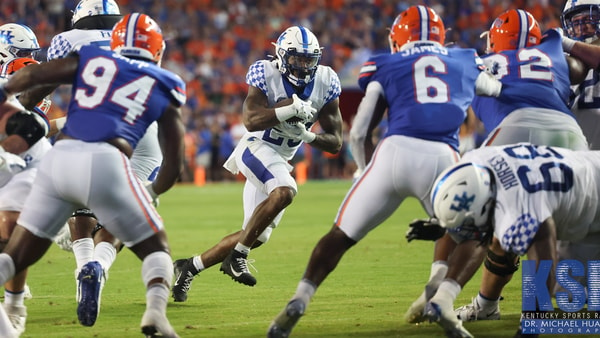

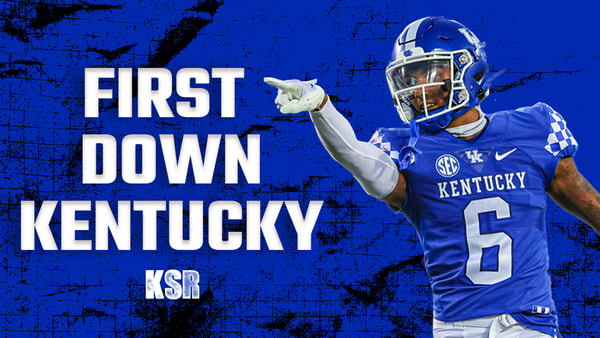
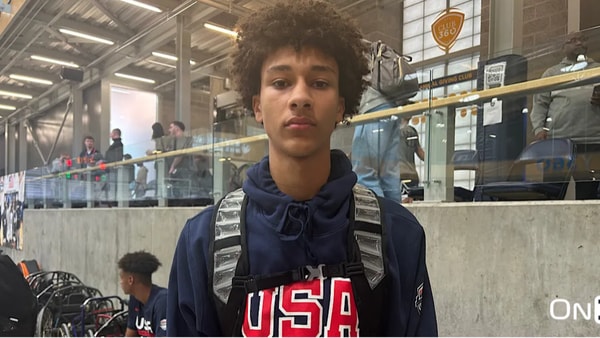
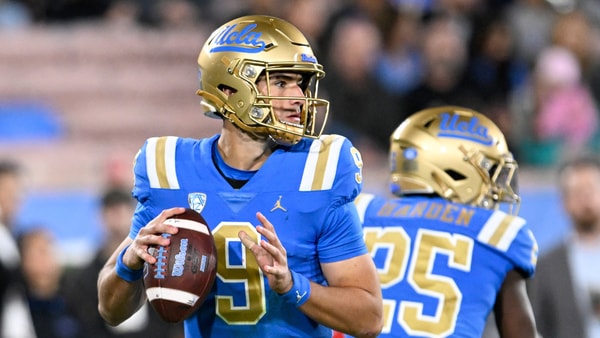
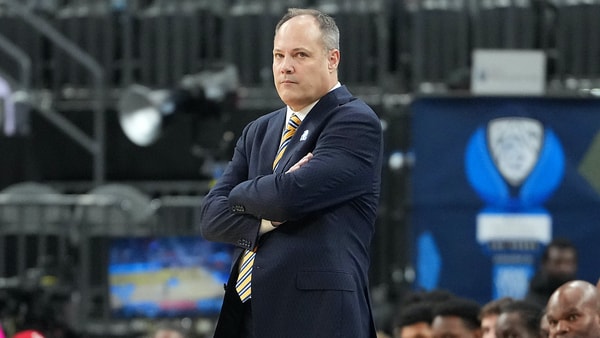
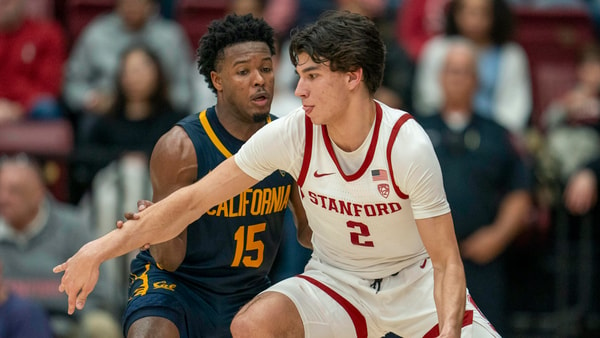
Discuss This Article
Comments have moved.
Join the conversation and talk about this article and all things Kentucky Sports in the new KSR Message Board.
KSBoard